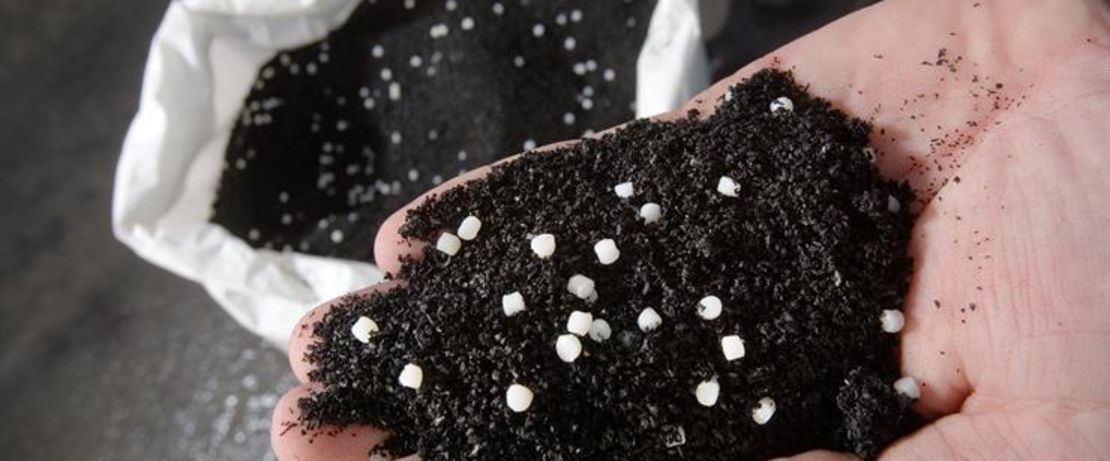
We make sense of recycling tires
Closed material cycles allow for reducing resource consumption and CO2 emissions. The rubber industry is a good example: The use of scrap tire granulate reduces the CO2 footprint of new products by up to a third.
What we are doing:
Evonik's VESTENAMER® process additive gives rubber waste a second chance. Instead of disposal by incineration, the solid material can be reused.
20 years ago, over half of all tires were incinerated at the end of their life cycle to generate energy in Germany alone, while only every tenth tire was processed into granulate or rubber powder. By now, the volume of the technological processing has caught up with energy generation.
Thanks to VESTENAMER®, the granulates and rubber woder are turned into much more than floor coverings, mats or support systems for construction signage. As a component of road bitumen or asphalt, a mixture of rubber powder and VESTENAMER® can improve the quality and durability of road surfaces.Long-term studies have shown that asphalt containing rubber helps to reduce cracking of the road surface and prevents the formation of ruts and potholes – all of which extends road service life.
A study by the accredited Institute for Energy and Environmental Research in Heidelberg (ifeu) provides further information about the eco-balance: By using one tonne of rubber powder as a robust material, around 2.7 tonnes of carbon dioxide can be saved, which would otherwise be produced during the incineration process.
VESTENAMER® application is a clean affair in many respects: The emissions of volatile and semi-volatile compounds, including hydrocarbons and sulfur compounds, are much lower in road surfaces containing rubber than in conventional, polymer-modified asphalt types. Furthermore, Evonik’s process additive reduces the migration of organic compounds that are leached out by rain and reach the groundwater. As a study commissioned by Evonik from FABES Forschungs-GmbH has documented, the use of VESTENAMER® therefore reduces the overall groundwater burden.



